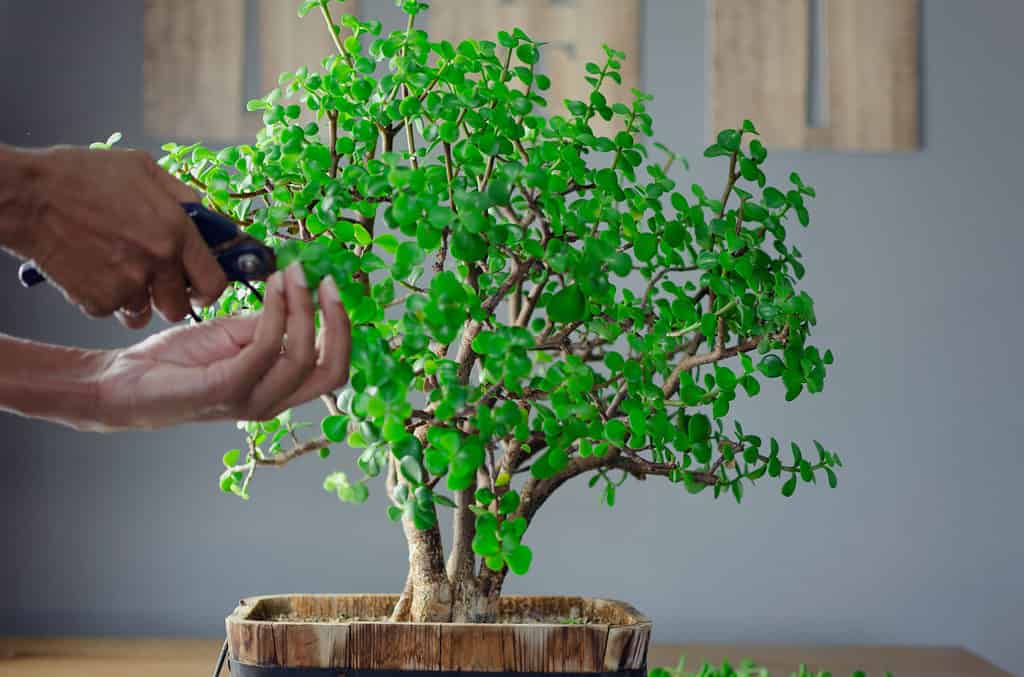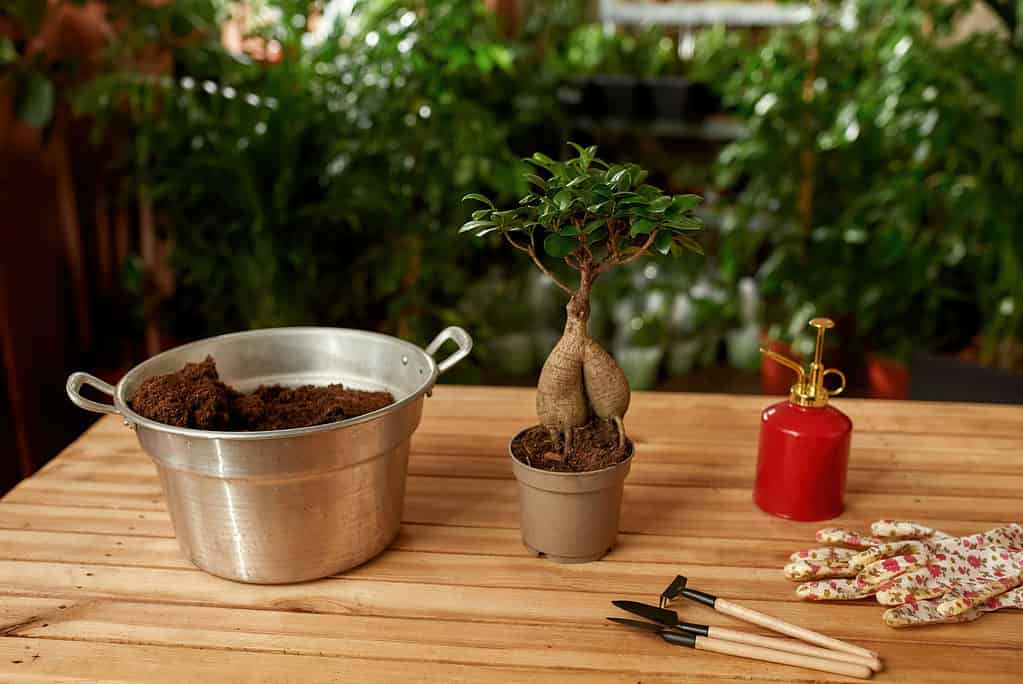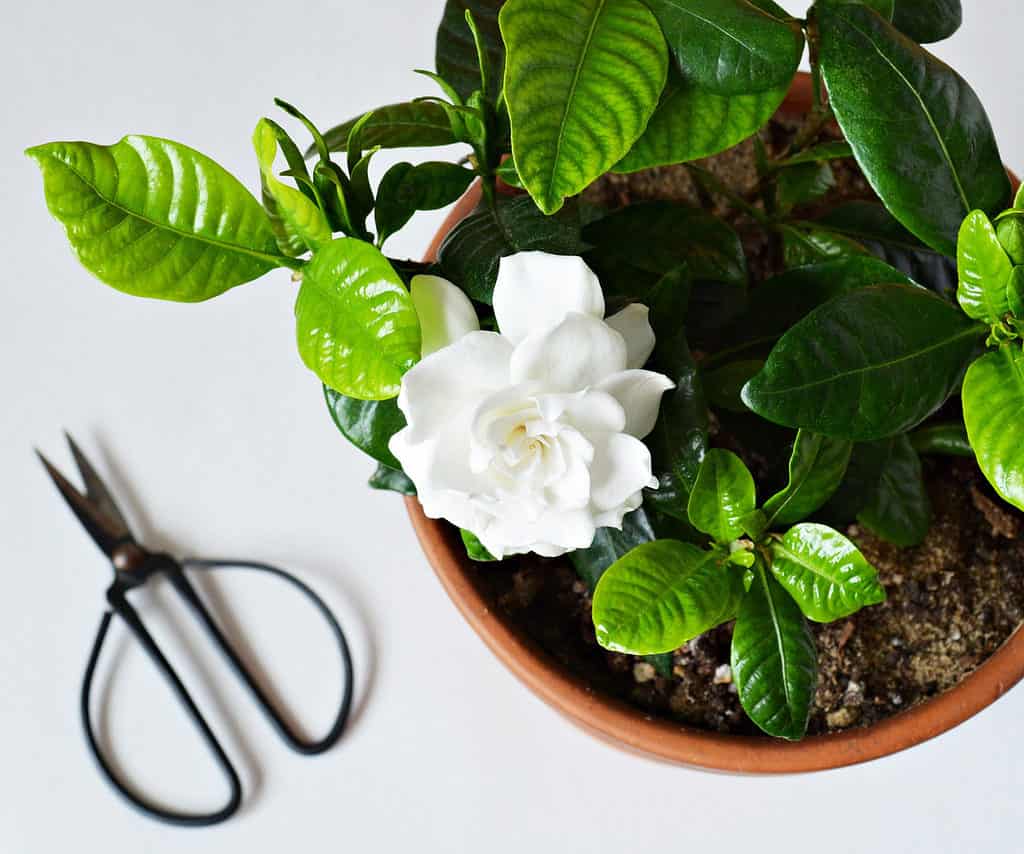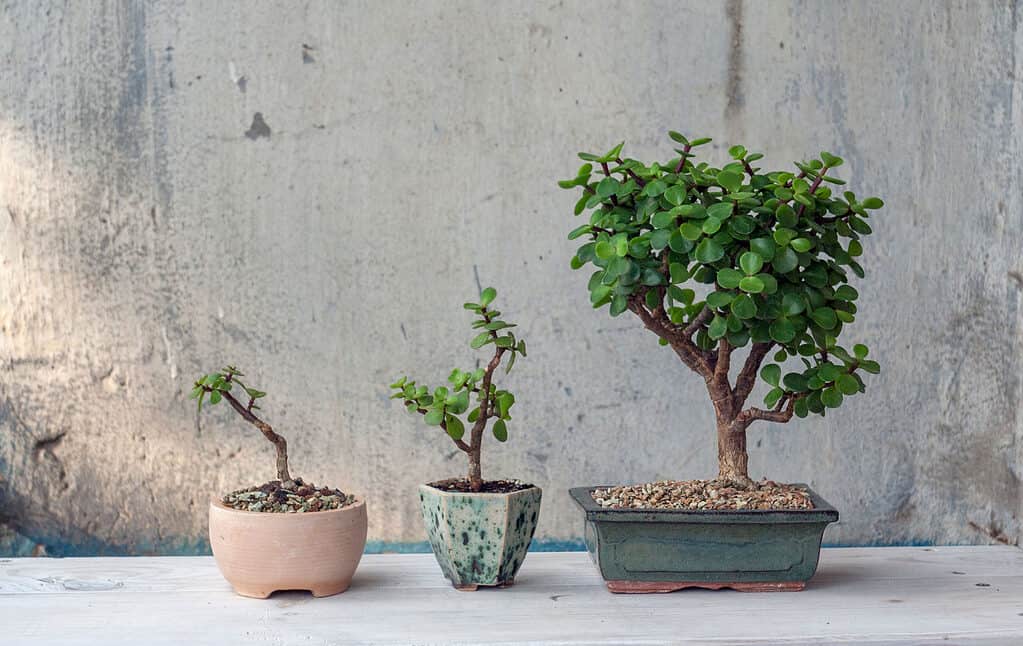You may already know how important and necessary pruning a Bonsai tree is, but do you know how to accomplish this task? While pruning is often a cause of stress for the beginning Bonsai tree artist, regular cutting or trimming of your specimen is necessary for a number of reasons. But what might some of those reasons be, and how can you safely and successfully prune your Bonsai tree?
In this article, we will go over everything you need to know about pruning a Bonsai tree. Depending on what you hope to accomplish through pruning, you can carefully and easily trim your Bonsai tree throughout its life. So long as you pay attention to the time of year and cut with care, pruning a Bonsai tree doesn’t have to be stressful. Here’s how to do it.
Why Prune Bonsai Trees?

Pruning your specimen regularly helps redirect the energies of your tree’s branches, allowing for more fullness and stylistic choices!
©Mlle Sonyah/Shutterstock.com
Pruning is everything to Bonsai tree cultivation. Not only is it necessary so that you can achieve a specific look or style for your specimen, but it also helps in altering the energies of your tree. You can prune Bonsai trees to promote smaller, more ample leaf development. Pruning large branches with care is the best way to properly shape a plant that you hope to use in a Bonsai tree format. Additionally, pruning is a great way to combat the way that plants and trees grow naturally when grown at their full sizes.
Most trees produce branches and leaves in both an upward and lateral way. Full-size trees know that they need to grow tall in order to reach the sunlight that is necessary for their development. However, this natural growth process makes Bonsai trees leggy, uneven, and unattractive. Pruning your specimen regularly helps redirect the energies of your tree’s branches, allowing for more fullness and stylistic choices!
Methods of Pruning Bonsai Trees

While practice makes perfect, it’s a good idea to carefully study your new Bonsai tree before you prune it, especially if you are pruning for its ultimate shape and style!
©BAZA Production/Shutterstock.com
There are a few different methods of pruning Bonsai trees, and you should know about the process and the tools involved. Here are some of the ways you can choose to prune your Bonsai tree as well as why you may want to prune in this method.
Initial Shaping
Unless you purchase an already-styled and shaped Bonsai tree from a reputable source, all Bonsai trees need help with their initial shape. Pruning a young tree or plant that you hope to use in Bonsai tree cultivation is necessary, and it often involves removing larger branches or even whole portions of the wood.
It’s important to know what style of Bonsai tree you hope to achieve before you start initially shaping your specimen. Once you cut or prune branches from your tree, they will never regrow in the same location. While practice makes perfect, it’s a good idea to carefully study your new Bonsai tree before you prune it, especially if you are pruning for its ultimate shape and style!
Structure-Based Pruning
Similar to the initial shaping of your Bonsai tree, structure-based pruning will likely be necessary to achieve your intended Bonsai tree style or vision. This type of pruning involves the removal of twigs or branches that are getting in the way of your styling or are perhaps distracting to the overall design of your tree. You may need to perform structural pruning after letting your tree recover its strength, or perhaps after you’ve achieved your desired Nebari or surface roots.
Structure-based pruning is a large pruning job that shouldn’t be performed more than once per year. In fact, most large-scale pruning like this shouldn’t be paired with other invasive tasks such as repotting or root maintenance. Your tree likely won’t have the energy for more than one of these things, so keep this in mind as you plan your Bonsai tree!

Defoliation is the act of removing some or all of the leaves from your Bonsai tree in order to encourage new, smaller leaves to form.
©Maryana Volkova/Shutterstock.com
Maintenance-Based Pruning
Contrary to popular belief, you can and should prune your Bonsai tree throughout the year– but only a little at a time! Maintenance-based pruning is a normal and encouraged activity for most Bonsai trees, but balance is key. For example, the amount that you prune and the time of year that you prune are both necessary factors to keep in mind before you start cutting away.
You’ll likely want to maintenance-prune your Bonsai tree so that it keeps the style and shape you have worked so hard to achieve! Depending on the type of tree and how much you remove, you can likely do maintenance on your tree no more than 5 times per year. That way, you don’t take too much energy away from the tree but you are still encouraging it to produce new growth and leaves where it matters most.
When it comes to indoor-grown Bonsai trees, you can prune them any time of year. Outdoor-grown Bonsai trees will need to be pruned seasonally, and only during their growing season. Knowing the type of tree that you have is necessary to achieve this timing, as some trees produce most of their growth in either early spring or early fall.
Pruning vs Defoliation
You can always choose to defoliate your tree rather than prune it. Defoliation is the act of removing some or all of the leaves from your Bonsai tree in order to encourage new, smaller leaves to form. Most Bonsai trees produce leaves at a large scale despite their small size, so this method may be all you need if you are trying to get smaller leaves on your specimen!
You can read all about Bonsai tree defoliation, including how to accomplish the task, here.
Tools for Bonsai Pruning

Necessary for defoliation, a leaf cutter is one of the first tools you’ll need for pruning Bonsai trees.
©Olena Antonenko/Shutterstock.com
It’s important to keep in mind that you’ll need to purchase specific tools for Bonsai tree pruning and trimming if you haven’t already. Maintaining your tree means that you can’t simply hack away at it with kitchen shears. This is a delicate living tree with very specific needs! Here are some tools to have on hand if you are planning a Bonsai tree pruning day.
Leaf Cutter
Necessary for defoliation, a leaf cutter is one of the first tools you’ll need for pruning Bonsai trees. These cutters come in a variety of shapes, sizes, and lengths so that you can trim leaves from your Bonsai tree, no matter how deep in the canopy they are. Leaf cutters are only meant to trim foliage or flowers and likely can’t handle cutting thicker twigs or branches.
Twig Shear
As the name implies, twig shears are perfect for removing new or small branches from your Bonsai tree. Also available in a variety of shapes and sizes, twig shears are often referred to as pruning shears. They are the perfect size for maintaining the overall style of your Bonsai tree and you may want to own a few different ones depending on the types of trees that you have.

Surprisingly, some types of Bonsai trees need to be pruned with hands only.
©Federico Magonio/Shutterstock.com
Branch Cutter or Saw
For larger trees or initial plant specimens that need shaping, you should consider a branch cutter or even a small saw. There are specific types of branch cutters that are rounded or have a concave shape, allowing you to cut thick branches right up against the trunk of your tree with minimal scarring. You may also find that a saw specifically made for Bonsai tree shaping suits your needs, but make sure to use it with care.
Use Your Hands!
Surprisingly, some types of Bonsai trees need to be pruned with hands only. By simply pinching off new growth with your fingers, you’ve successfully pruned your Bonsai tree! However, this is only necessary for most pine and conifer tree species, and some types of conifers will do best with a combination of shears and pinches. That’s why it’s important to do plenty of research on your specific type of Bonsai tree so that you don’t end up with unsightly brown and dried-out sections on your specimen!
When to Prune Bonsai Trees

You can perform maintenance pruning during the growing season of your particular tree, but even this should be done with care.
©pjatnica/Shutterstock.com
As previously mentioned, timing is everything when it comes to Bonsai tree pruning. The seasons matter significantly for Bonsai trees, not only when it comes to flower or fruit production. Your tree’s energies change with the seasons, especially with outdoor Bonsai trees. You’ll need to pay special attention to the time of year that you prune as well as any other maintenance you’ve done recently.
Many experts recommend performing structural pruning in a year when you aren’t performing any other major tasks. You can perform maintenance pruning during the growing season of your particular tree, but even this should be done with care. Depending on the tree species that you are working with, you may not want to remove more than 25% of the twigs or foliage. This gives your tree plenty of energy remaining as well as no major wounds to heal from!
Tips for Pruning Bonsai Trees

Your Bonsai tree will likely not produce new growth where it has been pruned, preferring to redirect energy into thickening other branches or even its trunk.
©Walter Pall/Shutterstock.com
Not only do the seasons affect when you can prune your Bonsai tree, but a few other things factor in as well. Here are a few more additional tips when it comes to pruning your Bonsai tree, new or old.
Prune with Style in Mind
As you may have already guessed, pruning willy-nilly is not good for a Bonsai tree. Not only should you only prune a little at a time, but you should also prune with your intended Bonsai tree style or shape in mind. Not only does this help you maintain a gorgeous Bonsai tree specimen as it ages, but it also gives you a reason to prune with intention.
Your Bonsai tree will likely not produce new growth where it has been pruned, preferring to redirect energy into thickening other branches or even its trunk. That’s why you should take a look at your tree from all sides and angles before you make any major cuts or trims. If you remove a branch that helps you achieve a windswept look, it’s likely not coming back!
Use Healing Pastes
Depending on the size of the cut that you make and how deep you make it, you may want to invest in a healing paste. Also known as cut pastes, these putty-like substances are designed to cover any wounds that you may incur on the wood of your tree. By using these pastes, you can help protect your tree as it heals and even promote its healing properties, resulting in faster scabs!
Always Sanitize Your Tools
Your Bonsai tree is a living thing, just as you are. Sanitizing your Bonsai tree tools is just as important as washing your hands before touching a cut or open wound on your own body. To avoid potential harm or disease in your Bonsai tree, be sure to sanitize your shears and cutters using rubbing alcohol, especially between specimens!
Pruning a Bonsai tree doesn’t have to be scary. In fact, it can be one of the most rewarding parts of Bonsai tree care. With practice and patience, you can shape the Bonsai tree of your dreams!
Up Next:
- The Best Soil for Bonsai Trees
- How to Properly Place a Bonsai Tree
- Bonsai Styles: Everything You Need to Know
The photo featured at the top of this post is © Federico Magonio/Shutterstock.com
Thank you for reading! Have some feedback for us? Contact the AZ Animals editorial team.







